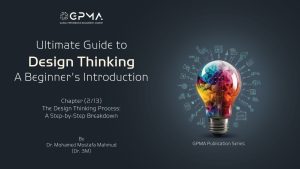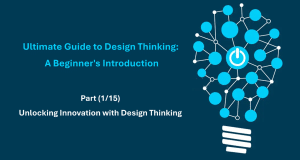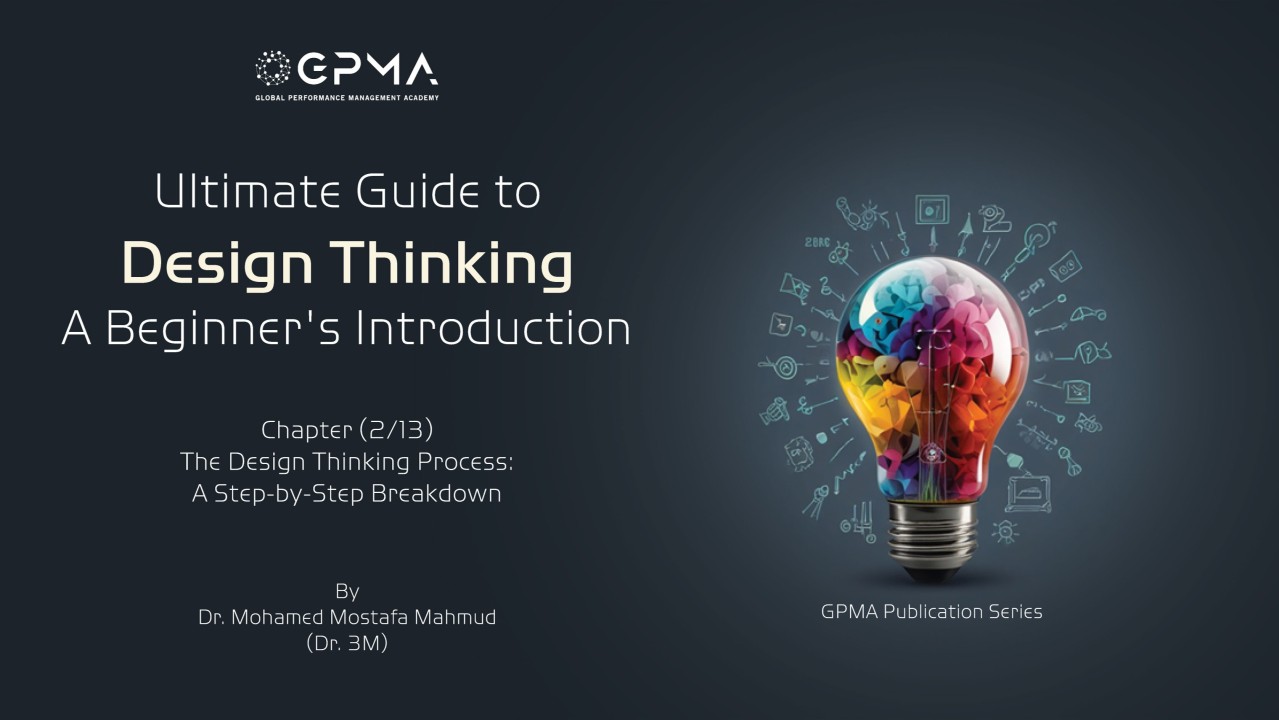1.1. What is Design Thinking? (Defining the Core Concept)
Design thinking is a human-centered approach to problem-solving that prioritizes empathy, creativity, and iterative learning. It’s not just a process; it’s a mindset that encourages us to challenge assumptions, explore new perspectives, and create solutions that truly resonate with users.
At its core, design thinking is about solving complex problems by understanding the people for whom we’re designing. It’s a blend of art and science, combining analytical thinking with creative exploration.
we’re designing. It’s a blend of art and science, combining analytical thinking with creative exploration.

1.2. Why Design Thinking Matters in Today’s World

In a world that’s rapidly changing, traditional problem-solving methods often fall short. Design thinking offers a flexible, adaptive framework that thrives in uncertainty. It’s particularly valuable in today’s context because:

- Complex Problems: Many of today’s challenges are “wicked problems” – complex, ambiguous, and constantly evolving. Design thinking helps break them down into manageable parts.
- User Expectations: Users now demand personalized, intuitive experiences. Design thinking ensures solutions are tailored to their needs.
Innovation: Companies that embrace design thinking are more likely to innovate and stay competitive.
1.3. Who Uses Design Thinking?
Design thinking isn’t confined to product design or tech startups. It’s used across industries, from healthcare to education, finance to social impact. Here are a few examples:
industries, from healthcare to education, finance to social impact. Here are a few examples:
- Healthcare: Redesigning patient experiences to improve outcomes.
- Education: Creating engaging learning environments for students.
- Finance: Developing user-friendly banking apps.
- Social Impact: Addressing global challenges like poverty and climate change.
1.1. What is Design Thinking? (Defining the Core Concept)
Design thinking is a human-centered approach to problem-solving that prioritizes empathy, creativity, and iterative learning. It’s not just a process; it’s a mindset that encourages us to challenge assumptions, explore new perspectives, and create solutions that truly resonate with users.
At its core, design thinking is about solving complex problems by understanding the people for whom we’re designing. It’s a blend of art and science, combining analytical thinking with creative exploration.
we’re designing. It’s a blend of art and science, combining analytical thinking with creative exploration.

1.2. Why Design Thinking Matters in Today’s World

In a world that’s rapidly changing, traditional problem-solving methods often fall short. Design thinking offers a flexible, adaptive framework that thrives in uncertainty. It’s particularly valuable in today’s context because:

- Complex Problems: Many of today’s challenges are “wicked problems” – complex, ambiguous, and constantly evolving. Design thinking helps break them down into manageable parts.
- User Expectations: Users now demand personalized, intuitive experiences. Design thinking ensures solutions are tailored to their needs.
Innovation: Companies that embrace design thinking are more likely to innovate and stay competitive.
1.3. Who Uses Design Thinking?
Design thinking isn’t confined to product design or tech startups. It’s used across industries, from healthcare to education, finance to social impact. Here are a few examples:
across industries, from healthcare to education, finance to social impact. Here are a few examples:
- Healthcare: Redesigning patient experiences to improve outcomes.
- Education: Creating engaging learning environments for students.
- Finance: Developing user-friendly banking apps.
- Social Impact: Addressing global challenges like poverty and climate change.


1.4. Key Principles of Design Thinking
Design thinking is guided by a few core principles that set it apart from other methodologies:
- User-Centricity:
- Always start with the user. Understand their needs, pain points, and aspirations.
- “You’ve got to start with the customer experience and work backward to the technology.” – Steve Jobs
- Iteration:
- Design thinking is non-linear. It’s about prototyping, testing, and refining ideas until they work.
- “Fail fast, learn fast, improve fast.” – Tom Kelley, IDEO
- Collaboration:
- Great ideas come from diverse teams working together. Design thinking thrives on cross-disciplinary collaboration.
- “None of us is as smart as all of us.” – Ken Blanchard
- Bias Toward Action:
- Design thinking encourages doing over theorizing. Build prototypes, test ideas, and learn by doing.

Chapter Summary
Design thinking is more than a process; it’s a way of thinking that puts people at the heart of problem-solving. By embracing empathy, iteration, and collaboration, we can tackle complex challenges and create solutions that truly matter. Whether you’re designing a product, improving a service, or addressing a social issue, design thinking offers a powerful framework for innovation.

 In the next chapter, we’ll dive into the 5 stages of the design thinking process, giving you a step-by-step guide to applying this approach in your own work.
In the next chapter, we’ll dive into the 5 stages of the design thinking process, giving you a step-by-step guide to applying this approach in your own work.

1.4. Key Principles of Design Thinking
Design thinking is guided by a few core principles that set it apart from other methodologies:
- User-Centricity:
- Always start with the user. Understand their needs, pain points, and aspirations.
- “You’ve got to start with the customer experience and work backward to the technology.” – Steve Jobs
- Iteration:
- Design thinking is non-linear. It’s about prototyping, testing, and refining ideas until they work.
- “Fail fast, learn fast, improve fast.” – Tom Kelley, IDEO
- Collaboration:
- Great ideas come from diverse teams working together. Design thinking thrives on cross-disciplinary collaboration.
- “None of us is as smart as all of us.” – Ken Blanchard
- Bias Toward Action:
- Design thinking encourages doing over theorizing. Build prototypes, test ideas, and learn by doing.

- Design thinking encourages doing over theorizing. Build prototypes, test ideas, and learn by doing.
Chapter Summary
Design thinking is more than a process; it’s a way of thinking that puts people at the heart of problem-solving. By embracing empathy, iteration, and collaboration, we can tackle complex challenges and create solutions that truly matter. Whether you’re designing a product, improving a service, or addressing a social issue, design thinking offers a powerful framework for innovation.

 In the next chapter, we’ll dive into the 5 stages of the design thinking process, giving you a step-by-step guide to applying this approach in your own work.
In the next chapter, we’ll dive into the 5 stages of the design thinking process, giving you a step-by-step guide to applying this approach in your own work.






